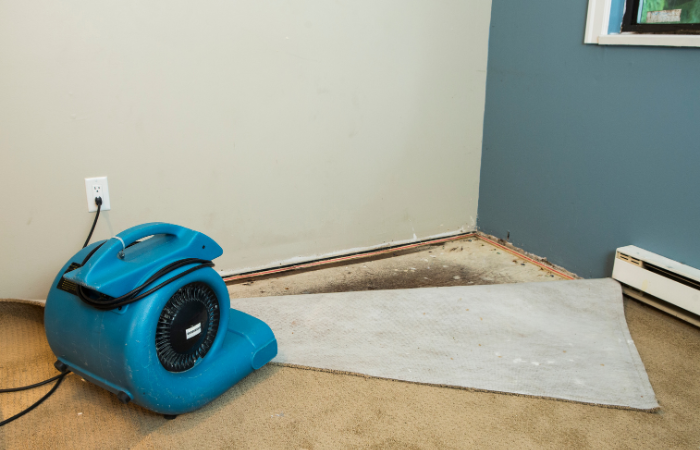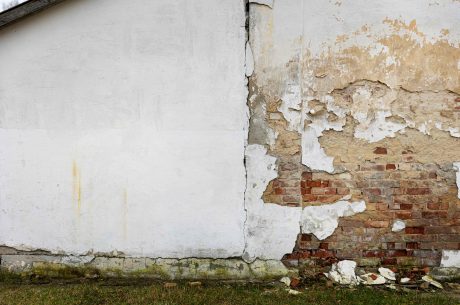Floods can cause massive damage to your home, including water damage mold. Water damage mold is a type of fungus that grows on damp surfaces and in wet environments, which makes floods the perfect breeding ground for mold growth. If you recently experienced flooding in your home or office, it’s essential to take action as soon as possible to prevent further damage from occurring.
In this article, we’ll provide insightful advice on how to deal with water damage mold after a flood. Let’s begin!
Recognizing Signs of Water Damage Mold Growth
Being able to recognize the signs of mold growth after a flood is important. Mold contamination and infestations can present an array of symptoms, so it’s important for homeowners to be vigilant in detecting warning signs and call professionals for water damage restoration immediately. Here are some common mold growth signs to look out for:
- Visible Mold: Keep an eye out for any visible mold growth on walls, ceilings, floors, or other surfaces. Mold often appears as black, green, or brown patches or spots.
- Musty Odor: Mold has a distinctive musty smell. If you notice an unpleasant, earthy odor in your home or office, it could indicate the presence of mold.
- Allergic Reactions: Mold can trigger allergic reactions in some individuals. If you or your family members suddenly experience unexplained allergic symptoms such as coughing, sneezing, itchy eyes, or respiratory problems, mold might be the culprit.
- Water Stains: Look for water stains on walls, ceilings, or floors, as they can indicate areas where mold is likely to grow.
- Excess Humidity: High humidity levels in your home or office can contribute to mold growth. If you notice condensation on windows or feel excessive moisture in the air, it could be a sign of mold-friendly conditions.
Assessing the Extent of Damage
After a flood, water damage mold can spread quickly, making an assessment necessary for determining what type of remediation process will be needed. To begin this process, we must first conduct a thorough flood damage and structural damage assessment.
The assessment aims to determine if any building materials or components are affected by water intrusion resulting from flooding and need to be removed as part of the mold remediation process. This includes inspecting walls, floors, ceilings, insulation, HVAC systems, pipes, and other areas where water could have intruded. All visible stains should also be noted during this inspection since they may indicate past or current moisture problems.
Evidence gathered during the assessment will provide clues about how much contamination exists in each area impacted by flooding, allowing us to develop an effective plan for safely handling contaminated materials with minimal disruption to your home or business operations. Additionally, evidence gathered during the assessment will help us determine which containment protocols will be necessary before beginning our professional mold removal services.
Handling Contaminated Materials
When dealing with a water-contaminated space, it is essential to handle contaminated materials properly. It’s important to take safety precautions when cleaning and discarding any mold or water-contaminated items. Here are the steps to follow when handling contaminated materials:
- Personal Protective Equipment (PPE): Before handling any contaminated materials, it’s crucial to wear appropriate personal protective equipment. This includes gloves, goggles, a respirator mask, and protective clothing to prevent direct contact with mold spores.
- Remove Porous Materials: Porous materials that have been extensively affected by water and mold, such as carpets, upholstered furniture, and drywall, should be carefully removed and discarded. These materials are difficult to clean thoroughly and can harbor mold growth even after drying.
- Clean Non-Porous Surfaces: Non-porous surfaces like metal, glass, or plastic can be cleaned effectively. Use a solution of detergent and water to scrub the surfaces and remove visible mold. Then, disinfect the area with a mixture of water and bleach (1 cup of bleach per gallon of water) or an EPA-approved mold disinfectant.
- HEPA Vacuuming: After cleaning, use a high-efficiency particulate air (HEPA) vacuum cleaner to remove any residual mold spores from surfaces and the surrounding area. HEPA filters are generally designed to trap tiny particles, including mold spores, effectively.
- Proper Disposal: Dispose of all mold-contaminated materials in sealed plastic bags. Follow the guidelines provided by your local authorities for proper disposal methods and regulations regarding mold-contaminated waste.
- Professional Assistance: If the mold growth is extensive, covering a large area or is difficult to handle on your own, it’s advisable to seek professional mold remediation services. Professional mold remediation companies have the expertise, equipment, and knowledge to safely handle and remove mold contamination.
Assessing Structural Integrity
Once contaminated materials have been removed, the next step is to assess structural integrity. This involves evaluating any damage caused by water and checking for building foundations that may be affected. The process of assessing building damage starts with thoroughly examining all areas where floodwaters had access.
Checking walls, floors, ceilings, and other components for signs of warping or weakening due to water exposure should be done. Additionally, an expert will need to evaluate the extent of water damage in order to determine what measures are necessary to restore structural stability.
It’s essential to take into account factors such as moisture levels, air quality, and temperature when assessing potential structural issues after flooding. Sometimes mold remediation specialists may use infrared cameras and moisture meters during their evaluation for more accurate results. In addition, they can inspect basements for standing water and check crawlspaces for leaking pipes or excessive humidity levels.
Removing Excess Water and Drying Affected Areas

Removing excess water and drying affected areas is a critical step in dealing with flood damage. The primary focus should be on removing standing pools of water quickly, as this helps to prevent further leakage or seepage into surrounding materials. To do this effectively, wet-vacuuming, mopping up puddles, and extraction devices can be used depending on the severity of the flooding.
Once all of the visible water has been removed, it’s time to start the drying process. This involves using fans to circulate air through damp areas and dehumidifiers to remove moisture from dry materials that have absorbed some humidity level. It’s important to note that during this stage, no new building materials should be installed until everything is completely dried out. Otherwise, you risk exacerbating existing issues with mold growth due to trapped moisture within walls or flooring.
The goal here is not only to restore an area to its pre-flood condition but also to alleviate any further risks associated with long-term health concerns, such as mold exposure over prolonged periods of time.
Professional Assistance for Long-Term Solutions
While the steps mentioned above can help you address immediate water damage mold issues after a flood, seeking professional assistance for long-term solutions is highly recommended. Professional mold remediation companies have the expertise, experience, and specialized equipment to thoroughly assess the extent of the mold damage and provide effective remediation.
Here are some reasons why professional assistance is beneficial:
1. Expertise
Professionals have in-depth knowledge of mold growth patterns, moisture control, and effective remediation techniques. They can accurately assess the extent of mold contamination, identify hidden mold growth, and provide appropriate solutions.
2. Safety
Dealing with mold can be hazardous to your health if not handled properly. Professionals have the necessary training and equipment to protect themselves and others during the mold remediation process. They follow safety protocols to minimize exposure to mold spores and use appropriate containment measures to prevent cross-contamination.
3. Comprehensive Solutions
Professional mold remediation companies provide comprehensive solutions that go beyond surface cleaning. They address the root cause of the mold growth, such as identifying and repairing water leaks or improving ventilation to prevent future mold issues.
4. Specialized Equipment
Professionals have access to specialized equipment, such as industrial-grade air scrubbers, dehumidifiers, and HEPA vacuums, which are crucial for effective mold removal and restoration. These tools help in removing mold spores from the air, drying out affected areas, and ensuring thorough cleaning.
5. Preventing Future Mold Growth
Professionals can provide recommendations and guidance on preventive measures to reduce the risk of future mold growth. They can advise on proper ventilation, moisture control, and regular inspections to detect any potential moisture or mold issues early on.
When selecting a professional mold remediation company, ensure they are certified, experienced, and reputable. They should follow industry guidelines and standards for mold assessment, remediation, and restoration. Request a detailed scope of work and cost estimate before starting the remediation process.
The Bottom Line
The worst part of water damage caused by flooding is the possibility of mold growth. If you’ve noticed signs or suspect that your home has been affected, it’s important to take immediate action. You can do it yourself, but it’s highly recommended to call professionals for help. They will know the best and safest methods to handle water damage mold after a flood.
If you need professional mold remediation, PuroClean Pembroke Pines is here to help. If you have any concerns or questions about water damage or mold infestation, don’t hesitate to contact us today!




 PuroClean of Ft. Lauderdale South
PuroClean of Ft. Lauderdale South